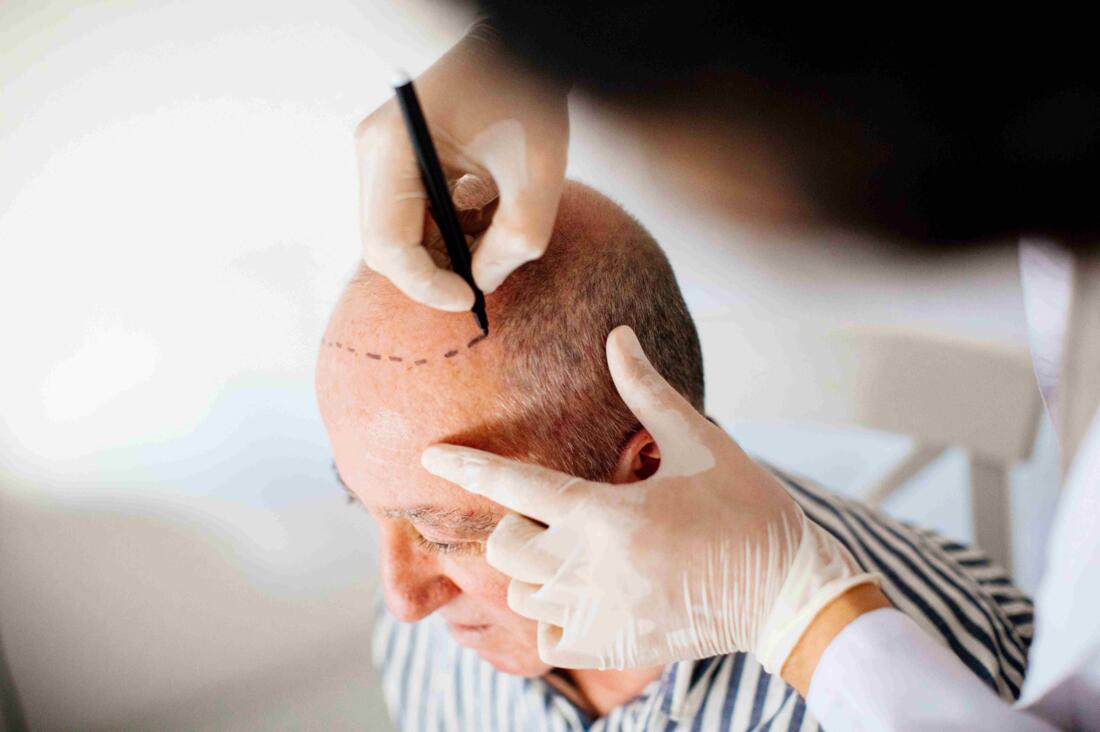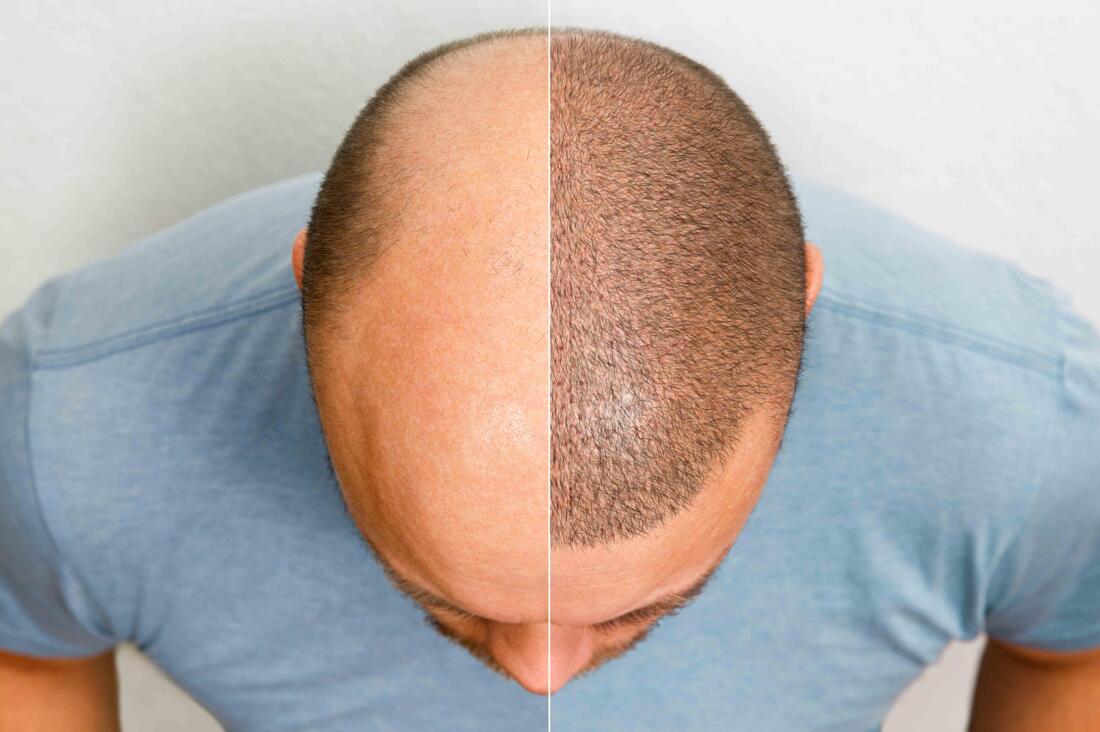Experiencing hair loss can be a troubling situation, impacting more than just the head but also a person's self-confidence and sense of self-worth. Thankfully, there have been notable developments in the field of hair restoration that provide encouragement to individuals dealing with hair loss.
Dealing with Hair Loss
The most up-to-date methods in hair transplant technology have become more advanced and efficient, delivering authentic-looking outcomes with little discomfort.
Of these techniques, Follicular Unit Extraction (FUE) and Follicular Unit Transplantation (FUT) stand out as the most favored approaches, each offering distinct benefits.
These treatments entail the meticulous removal and positioning of hair follicles, guaranteeing that the resulting hair growth appears as natural as can be.

FUE stands for Follicular Unit Extraction Method.
The FUE technique has become popular because it is minimally invasive and does not leave a linear scar.
During this procedure, hair follicles are taken from the scalp individually without using a scalpel or requiring stitches. This leads to a faster recovery and less discomfort after surgery.
The precise nature of this method ensures that the transplanted hair mimics the natural growth pattern, making it blend seamlessly with existing hair.
Furthermore, advancements in robotic technology have improved the FUE process by increasing its precision and effectiveness.

Method of FUT
Alternatively, FUT, also called strip surgery, entails extracting a small strip of tissue from the back of the scalp where hair is less likely to thin. The follicles are then isolated and relocated to the areas experiencing baldness.
Although this approach may result in a linear scar, it is generally concealed by the patient's existing hair and can be a more economical choice for those needing numerous grafts.
Both FUE and FUT boast high success rates and can be customized to suit the unique requirements and preferences of each individual.
Thanks to these innovative methods, people dealing with hair loss have an increased chance of attaining a full and natural head of hair, which not only restores their locks but also boosts their self-assurance.
Understanding the Causes of Hair Loss
Hair loss can stem from various factors including genetics, hormonal changes, and medical conditions. Understanding the root causes is essential in determining the right treatment approach. Genetic predisposition, often referred to as androgenetic alopecia, is a common reason for hair thinning and baldness in both men and women. Hormonal imbalances, particularly during pregnancy or menopause, can also contribute to temporary hair loss. Other conditions like thyroid disorders and autoimmune diseases can further exacerbate the issue. Recognizing these triggers allows for a more tailored hair restoration strategy.
Non-Surgical Alternatives for Hair Restoration
For individuals hesitant about surgical options, several non-invasive treatments can effectively address hair loss. Topical solutions like minoxidil are widely recognized and can stimulate hair regrowth for many users. Additionally, laser therapy has gained traction as a non-surgical method to enhance hair density by promoting blood flow to the scalp. Platelet-rich plasma (PRP) therapy, which utilizes the patient’s own blood components, is another innovative approach that can rejuvenate hair follicles. These non-surgical methods provide avenues for restoration without the need for invasive procedures.
The Role of Lifestyle Changes in Hair Health
Adopting a healthier lifestyle can significantly impact hair health and overall well-being. A balanced diet rich in vitamins, minerals, and proteins is crucial for maintaining robust hair follicles. Nutrients like biotin, zinc, and omega-3 fatty acids support hair growth and prevent shedding. Moreover, managing stress through mindfulness practices or physical exercise can alleviate hair loss caused by stress-related factors. Regular sleep patterns also contribute to better hormonal balance, which aids in preventing hair thinning. By integrating these lifestyle changes, individuals can complement their hair restoration efforts effectively.
Post-Procedure Care for Optimal Results
After undergoing hair transplant surgery, proper post-operative care is vital to ensure the best possible results. Patients are often advised to avoid strenuous activities that could cause excessive sweating or strain on the scalp during the initial healing phase. Following the surgeon's guidelines regarding washing and caring for the scalp is equally important to prevent infections. Patients should also be prepared for potential hair shedding in the weeks following the procedure, as this is a normal part of the hair growth cycle. Adhering to follow-up appointments allows for monitoring progress and addressing any concerns.
Psychological Benefits of Hair Restoration
Beyond the physical aspects, hair restoration can have profound psychological benefits. Many individuals experience a boost in self-esteem and confidence after regaining their hair, which can positively affect personal and professional relationships. The visible improvement in appearance often translates to enhanced social interactions, allowing individuals to feel more comfortable in their skin. Additionally, participating in support groups or communities for those experiencing hair loss can foster a sense of belonging and understanding, aiding emotional well-being. The cumulative effect of these psychological improvements can lead to a more fulfilling life.
Exploring Future Trends in Hair Restoration Technology
The field of hair restoration is continuously evolving, with exciting advancements on the horizon. Research into stem cell therapy offers potential for groundbreaking treatments that could regenerate hair follicles more effectively. Additionally, advancements in artificial intelligence are being explored to predict hair loss patterns and personalize treatment plans. Innovations like bioengineered hair follicles may soon provide alternative solutions for those with severe hair loss. As technology progresses, the future of hair restoration promises to become even more effective and accessible, offering hope to millions affected by hair loss.
AI-Assisted Content Disclaimer
This article was created with AI assistance and reviewed by a human for accuracy and clarity.